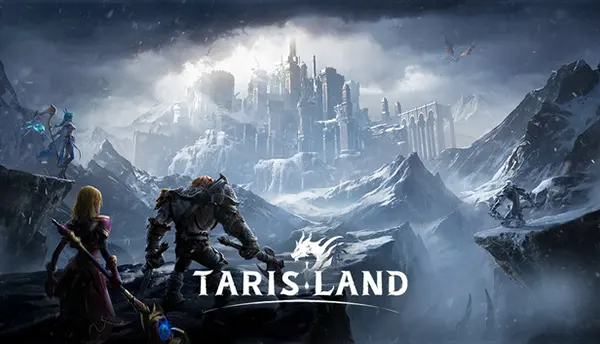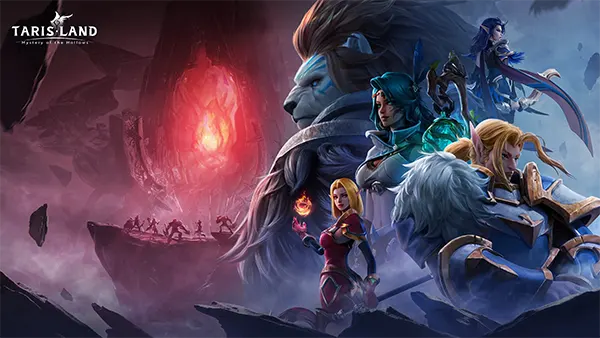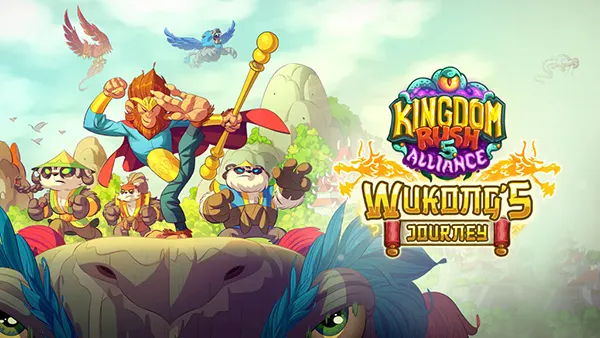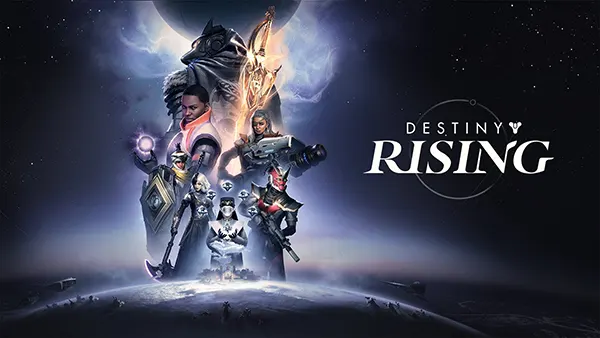
“Tarisland” — Attempting to Bring WoW to Mobile: Success or Failure?
In 2025, the mobile gaming market has witnessed another ambitious move with the global release of “Tarisland” — a fantasy MMORPG developed by Tencent. Marketed as a competitor to World of Warcraft (WoW), this title aims to recreate the epic scale of classic PC MMORPGs on mobile and PC simultaneously. But does Tarisland manage to live up to its promise, or does it fall into the shadow of its legendary predecessor?
Gameplay Mechanics and Class System
At its core, Tarisland delivers traditional MMORPG mechanics familiar to long-time genre fans. The game features a tri-party combat system involving DPS, tanks, and healers — and a class system that includes Paladin, Mage, Ranger, and more. Each class supports multiple specialisations, offering tactical flexibility in both PvE and PvP.
The controls are well-adapted to touchscreen, with a highly customisable UI that caters to both new players and veterans. A notable innovation is the flexible skill tree system, which allows players to experiment with hybrid builds without needing to reset entire talent paths. This fosters creativity in combat and team composition.
Still, gameplay can feel formulaic. Dungeon mechanics rely on recycled boss tactics, and daily grind missions tend to repeat across zones. While combat is fluid, it lacks the innovation to truly set itself apart from previous mobile MMORPGs.
Visuals and Open World Design
Tarisland’s visuals reflect the influence of Blizzard’s iconic art direction, yet distinguish themselves with vivid colour palettes and stylised 3D animations. Environments are varied, from dense forests and arid deserts to frozen tundras, all stitched together into an expansive open world.
Players can explore massive zones via mounts or fast travel portals. The seamless transition between areas adds to the immersion, although some minor lag spikes occur during cross-zone PvP battles, particularly on mid-tier devices. On PC, performance remains stable, offering players an option for higher framerates and graphic fidelity.
The worldbuilding, however, lacks depth. Lore is presented through basic quest dialogues and cutscenes that don’t quite match the cinematic storytelling standards of AAA titles. While the environments are pretty, they rarely feel lived-in or culturally grounded.
Monetisation and Progression Model
Unlike many mobile MMORPGs, Tarisland avoids pay-to-win traps by adopting a cosmetic-based monetisation approach. While players can purchase skins, mounts, and quality-of-life boosts, the gear and power scaling remain linked to in-game activity and effort.
That said, progression still leans heavily on daily grinding, event participation, and weekly reset timers. Levelling up is capped by stamina systems, which may frustrate players who prefer uninterrupted gaming sessions. There is also a “battle pass” system that unlocks exclusive cosmetics — standard in today’s mobile gaming landscape.
Guild management and team-based raids provide long-term engagement opportunities, though server population discrepancies sometimes affect matchmaking. Global servers have helped mitigate this by allowing cross-region PvE raids with adjustable language filters.
Community and Player Engagement
Tarisland’s developers have emphasised transparency with monthly developer updates and Q&A sessions. The in-game chat system is robust, supporting voice channels, guild chat, and cross-server messaging, all of which help nurture a vibrant community.
However, moderation tools are limited, which has led to issues with spam and toxicity in open chats. Community-driven events, such as boss hunting competitions and art contests, have boosted morale but are largely seasonal and infrequent.
Content creators and streamers have received early access, which led to some early hype but also raised concerns over balance and influencer bias. Nevertheless, Tarisland’s Discord servers and Reddit threads remain active, suggesting a dedicated core audience despite mixed reviews.

Comparison with World of Warcraft
From its interface to dungeon design, Tarisland clearly draws inspiration from WoW, particularly its mid-2000s era. The boss mechanics, character archetypes, and gear progression mirror Blizzard’s template — albeit simplified for mobile consumption.
But the key difference lies in accessibility. Tarisland requires no subscription, is cross-platform, and supports cloud saves — all major advantages for modern players. Where WoW demands a steep learning curve and time commitment, Tarisland offers bite-sized experiences for users on the go.
Nonetheless, WoW veterans may find the lack of complexity underwhelming. Tarisland captures the aesthetic and surface gameplay but not the layered strategic depth or social hierarchy that made WoW legendary.
Final Thoughts and 2025 Outlook
As of mid-2025, Tarisland sits in an interesting spot. It has managed to avoid many of the traps typical to mobile MMORPGs and presents a legitimate effort to bridge mobile and PC MMO audiences. With continued updates and community feedback, it may evolve into a reliable long-term title.
Still, it does not dethrone WoW. Nor does it fully innovate. Instead, it functions more as a modern homage — a refined mobile-first MMORPG that learns from its predecessors without surpassing them. For players seeking casual raiding, story-driven quests, and cooperative play on their phone or PC, Tarisland is a welcome addition to the genre.
The game’s future depends on its ability to innovate beyond nostalgia. If Tencent manages to enrich its narrative, expand its endgame, and fine-tune monetisation without alienating players, Tarisland may yet leave a deeper mark on the MMORPG scene.
RECOMMENDED GAMES
-
 Kingdom Rush 5: Alliance – Wukong’s Journey: The Return of a Legend...
Kingdom Rush 5: Alliance – Wukong’s Journey: The Return of a Legend...The Kingdom Rush franchise has long been regarded as one …
-
 Destiny: Rising — A Mobile Sci-Fi RPG Shooter
Destiny: Rising — A Mobile Sci-Fi RPG Shooter“Destiny: Rising” has emerged in 2025 as one of the …
-
 “Tarisland” — Attempting to Bring WoW to Mobile: Success or Failure?
“Tarisland” — Attempting to Bring WoW to Mobile: Success or Failure?In 2025, the mobile gaming market has witnessed another ambitious …
-
 Palworld Mobile: Pokémon With Guns Soon on Smartphones
Palworld Mobile: Pokémon With Guns Soon on SmartphonesThe gaming world was caught off guard by the unexpected …
